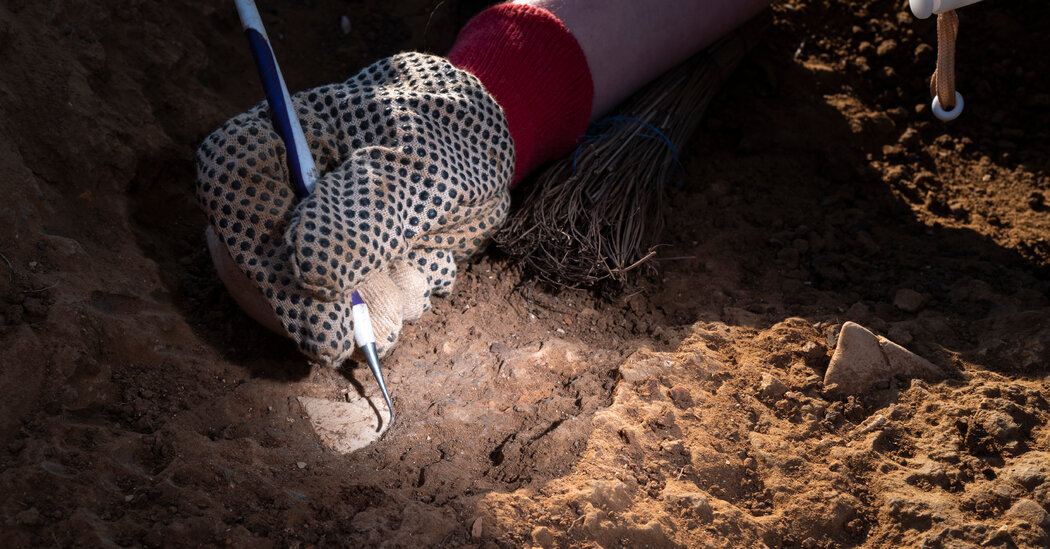As the sun peaked, heat waves rose from the cypress-covered hills around me. The turquoise waters of the Ionian Sea shimmered on the western horizon, and olive groves stretched toward infinity to the east. Over the deafening chorus of cicadas, which indicated we were in the hottest part of the Mediterranean summer, the rhythmic thud of pickaxes echoed across the hilltop, each swing tearing into the rusty red soil of Greece’s Peloponnese.
Amid the stifling heat, a team of archaeologists, university students and local workmen were digging deeper into the remains of Iklaina, a Bronze Age city that once ruled the surrounding landscape and, according to Homer, may have played a role in the legendary Trojan War, more than 3,000 years ago. Today, the settlement lies burned and buried, offering the researchers an invaluable means of studying the volatile politics of ancient Greece and the complex lives of the Mycenaean people, who lived at the crossroads of history and mythology.
During the end of Greece’s Bronze Age, between approximately 1700 and 1100 B.C., Mycenaean civilization flourished throughout the Peloponnesian Peninsula. Ruled by a conglomerate of palaces that oversaw regional kingdoms, Mycenaean society was dominated by war and hostility; various kings, including Agamemnon from Mycenae and Nestor of Pylos, sought to expand their rule over the land. The period was also rich in cultural and technological advancements, including the mainland development of monumental architecture (in the form of palaces and vaulted tholos tombs), advancements in ceramics and the development of Linear B, a script that provides the first written occurrence of the Ancient Greek language.
In 1876, the German archaeologist Heinrich Schliemann began excavating the fabled city of Mycenae and, in uncovering treasure-laden grave circles of ancient kings, turned the world’s attention to the Mycenaean civilization. In the century and a half since Schliemann’s great discoveries, the excavation of other Mycenaean palatial sites — including Tiryns, Gla and Pylos — continued to expand the contemporary understanding of the Bronze Age world.
And yet, while research at these sites offered glimpses into Mycenaean politics and the lives of the elite, they did not provide evidence of the lives of the general population — a demographic considered by many to be essential to understanding how Mycenaean civilization rose and collapsed. With the hope of filling in gaps about the…
Click Here to Read the Full Original Article at NYT > Travel…
